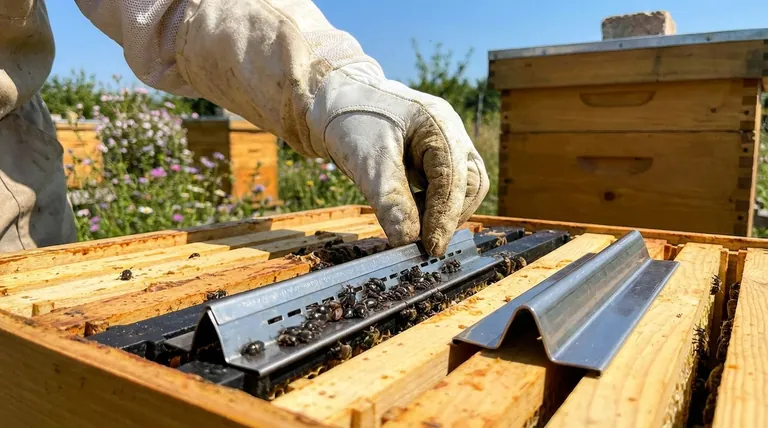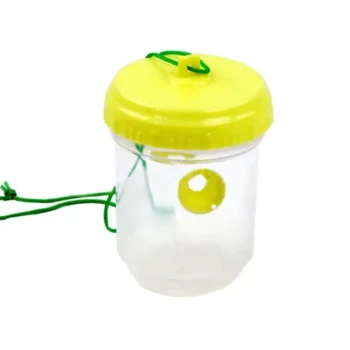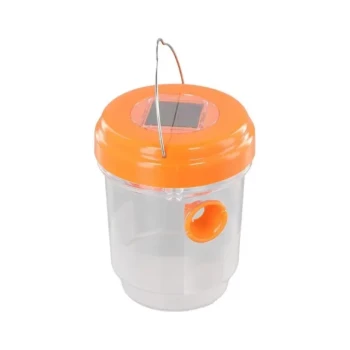In a typical summer, you will likely use between two and four rounds of beetle traps. This frequency ensures the traps remain effective as their attractants fade and they fill with captured beetles. However, the exact number can change based on the severity of your specific infestation.
The core principle is not to follow a rigid schedule, but to replace traps based on their performance. A trap should be replaced when it is full or when its lure is no longer effective, whichever comes first.

Why Trap Replacement Isn't Based on a Calendar
The "2-4 rounds per summer" guideline is a useful starting point, but effective pest control requires observation. Factors like local beetle population density, weather conditions, and the specific type of trap you're using will dictate the true replacement cycle.
Key Indicator 1: The Trap is Full
A full trap is the most obvious sign that it needs to be replaced. Once the collection container is filled with beetles, it can no longer capture more.
More importantly, a full trap can actually become counterproductive. The scent of decaying beetles can sometimes deter new beetles from approaching the trap.
Key Indicator 2: The Lure Has Expired
Beetle traps use a chemical lure, often a pheromone or a floral scent, to attract the target pests. These lures have a finite lifespan.
Most commercial lures are designed to last for a specific period, often indicated on the packaging. Once this period passes, the lure's effectiveness diminishes rapidly, even if the trap isn't full.
Hot and dry conditions can sometimes cause lures to expire faster than stated. Monitoring the rate of new captures can give you a clue; if you stop seeing new beetles, the lure is likely spent.
Understanding the Trade-offs
Relying solely on a fixed schedule can lead to common pitfalls that undermine your pest management efforts.
The Problem with Waiting Too Long
Leaving an ineffective trap in place creates a false sense of security. You might believe your beetle problem is under control when, in reality, the population is growing unchecked because your primary tool is no longer working.
This can lead to significant plant damage that could have been prevented with a timely trap replacement.
The Inefficiency of Replacing Too Soon
On the other hand, replacing traps that are still working effectively is a waste of money and resources. If a trap is only partially full and the lure is still active, there is no benefit to replacing it ahead of schedule.
This is why observation is more important than sticking to a rigid calendar.
Making the Right Choice for Your Goal
Your replacement strategy should adapt to your specific situation and goals.
- If your primary focus is managing a heavy infestation: Plan to inspect traps every few days and be prepared to replace them as soon as they are half to three-quarters full to maintain maximum pressure on the beetle population.
- If your primary focus is monitoring for a new or low-level infestation: You can follow the lure's recommended lifespan, replacing it as scheduled, while keeping an eye on the trap to ensure it doesn't fill up unexpectedly.
Ultimately, proactive monitoring is the key to effective and efficient beetle control throughout the summer.
Summary Table:
| Replacement Trigger | Key Indicator | Action Required |
|---|---|---|
| Trap is Full | Collection container is filled with beetles. | Replace immediately to maintain effectiveness and avoid deterring new beetles. |
| Lure Has Expired | Lure's stated lifespan has passed or capture rate has dropped significantly. | Replace the trap or lure to restore attracting power. |
Maximize your apiary's protection with HONESTBEE's reliable beetle traps.
As a trusted supplier for commercial apiaries and beekeeping equipment distributors, we understand that effective pest management is crucial for hive health and honey production. Our wholesale-focused operations ensure you get the high-quality, durable traps you need to safeguard your investment.
Don't let an ineffective trap schedule compromise your season. Contact our experts today to discuss your specific needs and get a bulk quote on the most effective beetle control solutions.
Visual Guide

Related Products
- Reusable Aluminium Beetle Trap for Small Hive Beetles Silver Bullet
- Reusable Clear Small Hive Beetle Traps for Beehives Beetle Trapping Tools
- Black Plastic Beetle Barn Hive Beetle Trap for Beehives
- Plastic Beetle Blaster Trap Beekeeping Tools and Supplies
- Removable Washable Hive Beetle Trap Attractants for Small Hive Beetles
People Also Ask
- What should be avoided when installing Beetle Blasters in a hive? Avoid These 3 Costly Placement Mistakes
- What is the recommended number of beetle traps per hive? Optimize Your Hive's Beetle Defense
- How do beetle blasters work to protect bee colonies? Effective IPM for Healthy Hives
- What are the steps for installing hive beetle traps? A Guide to Effective Beetle Control
- How do Beetle Blasters trap adult beetles? A Simple, Non-Chemical Pest Control Solution



















